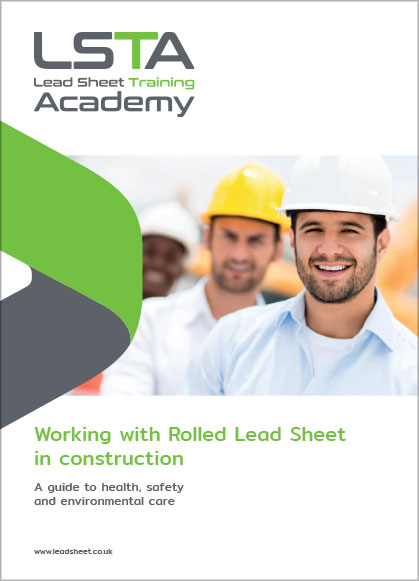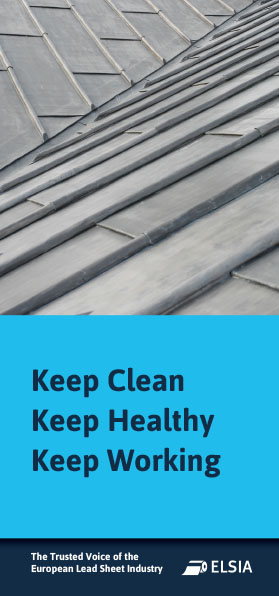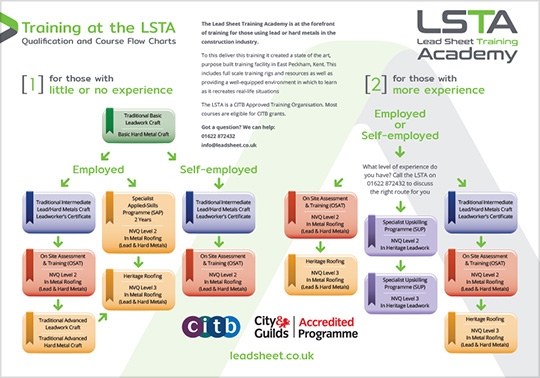The use of Lead in the UK is currently not specifically covered by the Control of Substances Hazardous to Health (COSHH) Regulations (2002), the Manual Handling Regulations (1992) or the Construction Design and Management (CDM) Regulations 1994, but these must be taken into account when working with Lead.
Reference should also be made to the Control of Lead at Work (third edition) Control of Lead at Work Regulations 2002 Approved Code of Practice and Guidance (ISBN 0-7176-2565-6)
The following are guidelines that should be followed whenever Lead is used in a work situation:
Duties
Employers and employees alike are responsible for protecting both themselves and other persons on premises where Leadwork is being carried out or anyone else who is likely to be exposed to Lead while the work is in progress.
Assessment of Risk Of Exposure
If there is a risk of exposure to Lead in a form that may be inhaled or ingested, the level of risk must be assessed and the findings properly recorded. Correct working practices and proper controls should be established and appropriate protective and safety equipment provided before the work proceeds.
Control Measures
The employer and employee must ensure, as far as is reasonably practical, that all measures are taken to restrict and control exposure.
Protective Clothing
Each employee should be provided with and should wear adequate protective clothing.
Respiratory Equipment and Ventilation
Suitable masks or respiratory equipment must be provided and used where there is a risk of exposure to airborne lead dust or fumes.
Washing Facilities and Canteen Areas
Adequate washing and changing facilities should be provided. Washing of hands is essential before eating, drinking or smoking and before leaving the workplace.
Food and drink should not be consumed in any area where Leadwork is being carried out. Washing of hands and face and changing of contaminated clothes should take place before entering canteen areas.
Spread of Contamination
Both employer and employee should take such steps as are reasonably practicable to prevent Lead contamination from spreading beyond the workplace or storage area.
Waste and Scrap
Old Lead sheet being replaced should be removed with care. Scrap and dust should be taken to approved collectors to facilitate recycling. Vehicles transporting scrap and dust should be thoroughly washed and cleaned after use.
Lifting Lead
Lead is heavy. Proper lifting equipment and additional staff should be available and always used to ensure the safety of operatives lifting and moving Lead sheet.
Medical Surveillance
The blood Lead level of all operatives working with Lead should be monitored at regular intervals.
Maintenance Records
It is the duty of the employer to provide and maintain adequate records that show details of risk assessments, information and training provided, precautionary measures taken, medical surveillance and ventilation and respiratory equipment provided.
Further information is available from the Health and Safety Executive and the Lead Sheet Training Academy.
Films
The Lead Sheet Training academy has produced films in its workshop that provide an overview of some key Health and safety points. These are intended as a guide for those who have some experience of leadwork and will be added to in the future.




